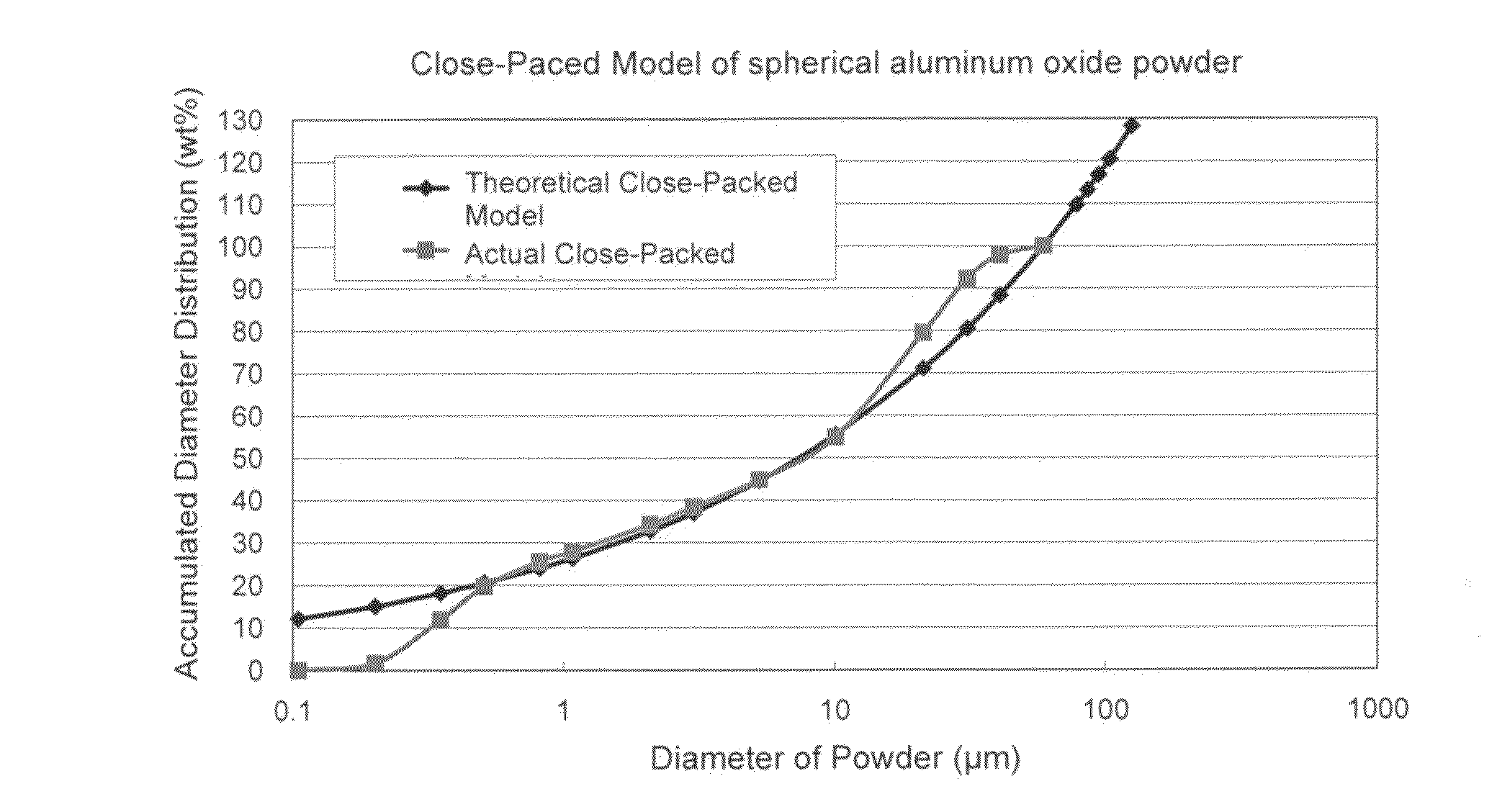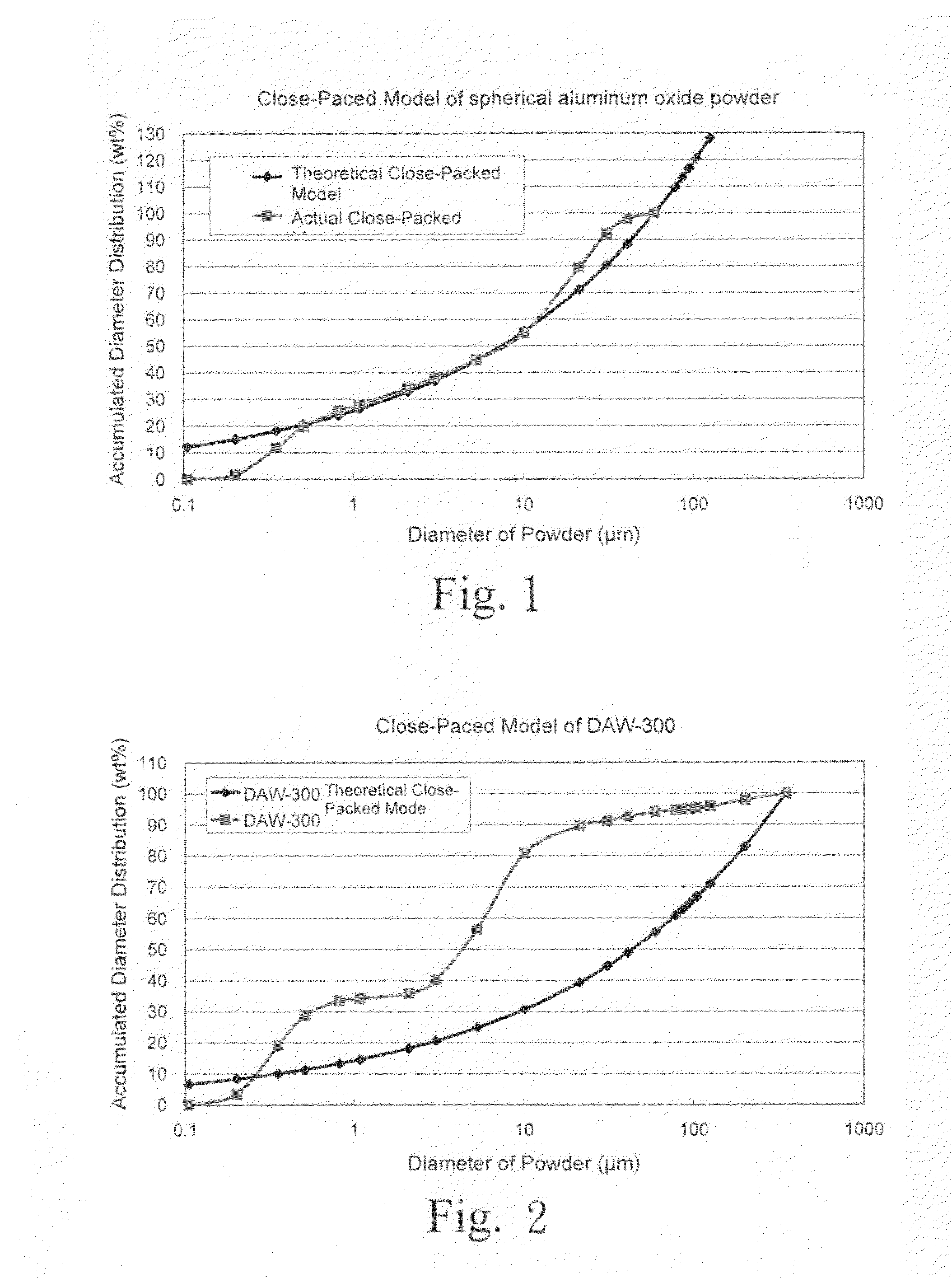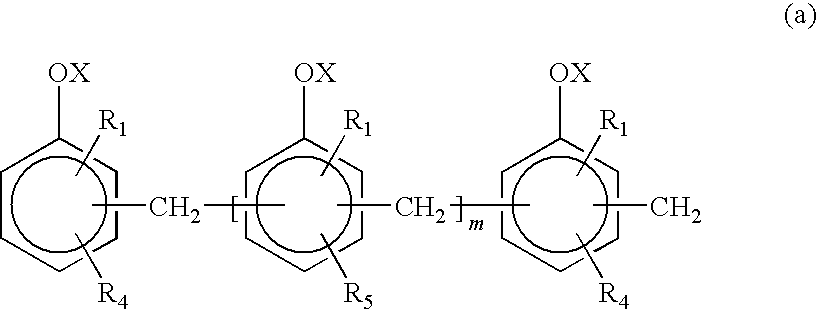High thermal-conductive, halogen-free, flame-retardant resin composition, and prepreg and coating thereof
a technology of flame-retardant resin and halogen-free resin, which is applied in the field of resin composition, can solve the problems of aggravated accumulation of heat generated by electronic components, adverse effects on the physical properties and flame-retardancy of the material, and low-molecular weight smoke suppressing agent tend to deteriorate the resulting material, etc., and achieve excellent heat resistance and flame-retardancy, high thermal-conductivity, and rapid dissipation of hea
- Summary
- Abstract
- Description
- Claims
- Application Information
AI Technical Summary
Benefits of technology
Problems solved by technology
Method used
Image
Examples
example 1
[0061]75 parts by weight of solid phosphorus-containing epoxy resin (with epoxy equivalent weight (EEW) of 350 g / eq, containing 2.6 wt % of phosphorous, available from Nan Ya Plastics Corporation, Taiwan, NPEP-200LA70), 25 parts by weight of bisphenol-A epoxy resin (EEW=186 g / eq, available from Nan Ya Plastics Corporation, Taiwan, NPEL-128E), 34.87 parts by weight of bakelite and 0.05 parts by weight of 2-methyl imidazole are dissolved in 207.5 parts of butanone before mixed with 250.5 parts by weight of high thermal conductivity powder so as to obtain a high thermal-conductive, halogen-free and flame-retardant composition solution wherein the high thermal conductivity powder accounts for 65% of the solution.
[0062]Therein, a close packing model of the high thermal conductivity powder (250.5 parts) added into the resin solution is derived from Horsfield Model. The obtained specific structure contains 45.09 parts of spherical aluminum oxide powder A (with average diameter of D50=5 μm)...
example 2
[0065]The formula of the resin solution is similar to that of Example 1 except that the amount of the high thermal conductivity powder added into the resin solution is increased to 539.5 parts by weight (accounting for 80% of the high thermal-conductive, halogen-free and flame-retardant composition solution). Horsfield Model is implemented to get the close packing model of the high thermal conductivity powder, and the obtained specific structure contains 97.11 parts of spherical aluminum oxide powder A (with average diameter of D50=5 μm), 10.79 parts of spherical aluminum oxide powder B (with average diameter of D50=0.5 μm), and 431.6 parts of boron nitride (with average diameter of D50=5.5 μm). A comparison between the actual packing curve and the theoretical packing curve of aluminum oxide powder is shown in FIG. 1.
[0066]The physical properties of the obtained copper foil substrate are tested, and results of tests are shown in Table 1.
example 3
[0067]The formula of the resin solution is similar to that of Example 2 except that the solid content of the resin is adjusted to 75 wt %. The resultant resin is applied to a copper foil with thickness of 35 μm so as to form an RCC (resin coated copper foil) with coating thickness of 100 μm. Then another copper foil with thickness of 35 μm is laminated with the resin under lamination conditions as provided in Example 1. The physical properties of the obtained copper foil substrate are tested, and results of tests are shown in Table 1.
PUM
| Property | Measurement | Unit |
|---|---|---|
| Length | aaaaa | aaaaa |
| Fraction | aaaaa | aaaaa |
| Fraction | aaaaa | aaaaa |
Abstract
Description
Claims
Application Information
 Login to View More
Login to View More - R&D
- Intellectual Property
- Life Sciences
- Materials
- Tech Scout
- Unparalleled Data Quality
- Higher Quality Content
- 60% Fewer Hallucinations
Browse by: Latest US Patents, China's latest patents, Technical Efficacy Thesaurus, Application Domain, Technology Topic, Popular Technical Reports.
© 2025 PatSnap. All rights reserved.Legal|Privacy policy|Modern Slavery Act Transparency Statement|Sitemap|About US| Contact US: help@patsnap.com



